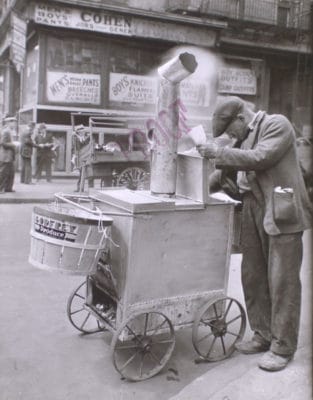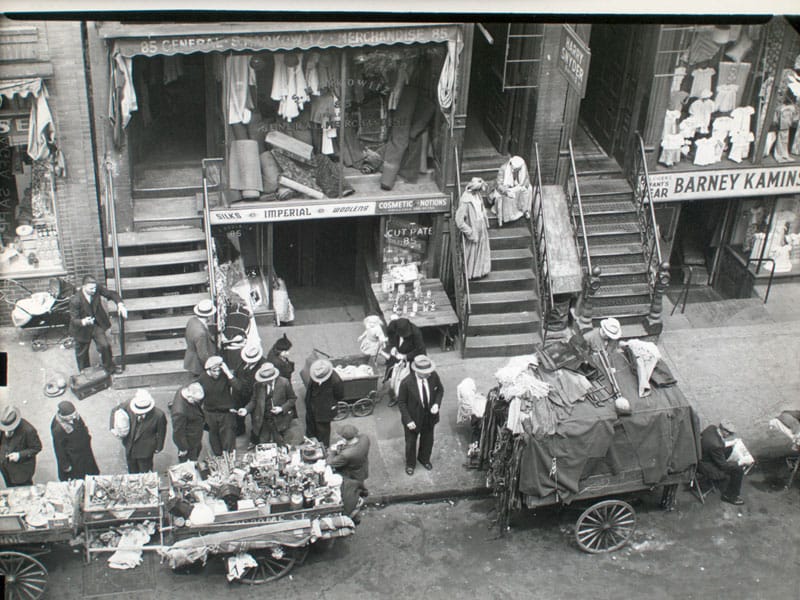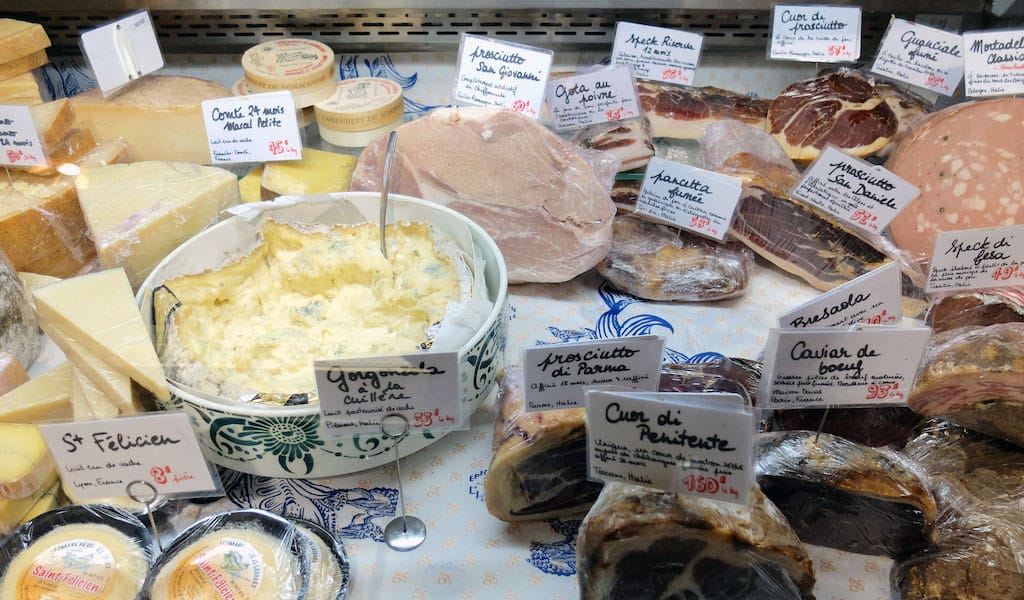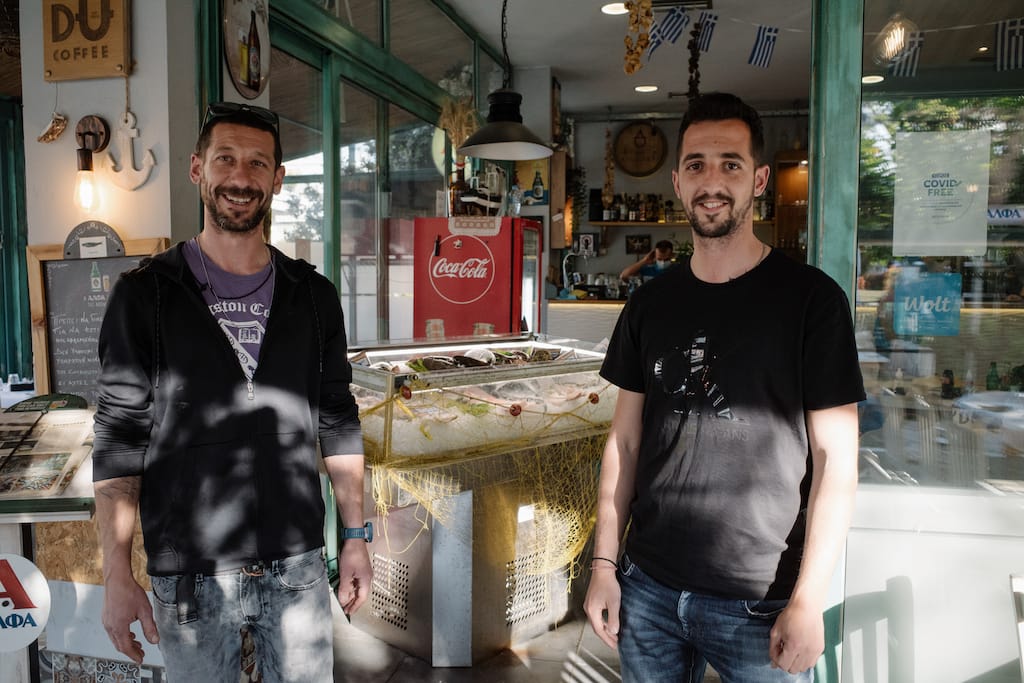Queens these days is New York’s street cart central. According to the Street Vendor Project, which advocates for vendor rights in the five boroughs, the largest concentration of street vendors with licenses lives in that borough. This concentration of streetside sellers is easy enough to see on six-mile-long Roosevelt Avenue, which runs through six of Queens’ most ethnically diverse neighborhoods with a dizzying assortment of vendors catering to almost every taste and nationality, depending on the time of day.
It’s not always easy work. At a recent monthly meeting of street vendors in Corona, Queens, the air was thick with grievances about the conditions they have to work under. Jorge and Narcissa, a couple who sells Ecuadorian food, told of repeatedly being ticketed or forced to move their cart because of complaints from a local businessman who doesn’t want them selling from in front of his store. The duo has explained to the storeowner about their right to vend, but “the owner calls the police, and the police come, and always make us move our cart.”
“How do we make a living with these constant troubles?” they asked.
 This profusion of street vendors – and the troubles they face – are nothing new; they’ve only migrated to another borough. In Manhattan and Brooklyn it was the same a hundred years ago. Immigrants plied carts and peddled merchandise up and down the Lower East Side’s crowded cobbled streets. Then and now street vendors were migrants, peddlers, hucksters and entrepreneurs, all rolled into one.
This profusion of street vendors – and the troubles they face – are nothing new; they’ve only migrated to another borough. In Manhattan and Brooklyn it was the same a hundred years ago. Immigrants plied carts and peddled merchandise up and down the Lower East Side’s crowded cobbled streets. Then and now street vendors were migrants, peddlers, hucksters and entrepreneurs, all rolled into one.
In 1906, several peddlers’ associations existed in New York City: The United Citizens’ Peddlers’ Association of Greater New York had six branches, four for Jews, one for Italians and one for Greeks. In addition, there was the Push-cart Vendors’ Association of Harlem and the Brooklyn Peddlers’ Association.
 According to the 1906 Report of the Mayor’s Push-cart Commission that focused on tenement areas of the Lower East Side and Brooklyn, 97 percent of the Lower East Side vendors were foreign born and mainly Jewish, Italian, and Greek; the origins of the rest were Austrian, Bulgarian, English, German, Hungarian, Irish, Spanish, Swedish, Turkish and American. Disparaged in the Report for being a threat to brick-and-mortar establishments and a menace to the order and cleanliness of the streets, Lower East Side and Brooklyn vendors persevered and later moved up the economic ladder to run lasting brick and mortar businesses.
According to the 1906 Report of the Mayor’s Push-cart Commission that focused on tenement areas of the Lower East Side and Brooklyn, 97 percent of the Lower East Side vendors were foreign born and mainly Jewish, Italian, and Greek; the origins of the rest were Austrian, Bulgarian, English, German, Hungarian, Irish, Spanish, Swedish, Turkish and American. Disparaged in the Report for being a threat to brick-and-mortar establishments and a menace to the order and cleanliness of the streets, Lower East Side and Brooklyn vendors persevered and later moved up the economic ladder to run lasting brick and mortar businesses.
For poor and migrant vendors today, nothing much has changed. They confront the same attitudes expressed in the 1906 Report and struggle to change minds and government policies. Watch this short video “Peddlers, Police, and Power: 1906 versus 2016” that pulls from the 1906 Report and archival photos.
 July 1, 2020 Épicerie l’Idéal
July 1, 2020 Épicerie l’Idéal
When épiceries first set up shop in France in the Middle Ages, they predominantly sold […] Posted in Marseille December 13, 2018 Best Bites 2018
December 13, 2018 Best Bites 2018
The past year in Istanbul seemed to be dominated by discussions of financial woes. Amid […] Posted in Istanbul June 3, 2022 O Foititis
June 3, 2022 O Foititis
Neo Psychiko, a suburb north of central Athens, is just a 15-minute drive from the […] Posted in Athens
Published on August 05, 2016
Related stories
July 1, 2020
MarseilleWhen épiceries first set up shop in France in the Middle Ages, they predominantly sold spices – les épices, as their name implies. In the 19th century, they added foodstuffs on their shelves, evolving into magasins d’alimentation générale. Some of these general stores are North African-owned corner shops. Open 24/7, they play an indispensable, yet…
December 13, 2018
IstanbulThe past year in Istanbul seemed to be dominated by discussions of financial woes. Amid an ongoing economic crisis, the lira shed half of its value between January and August, resulting in a spike in prices of even the most basic staples. Everything seemed expensive in relation to Turkish wages, which dramatically declined in value…
June 3, 2022
AthensNeo Psychiko, a suburb north of central Athens, is just a 15-minute drive from the city’s busy Syntagma central square yet feels like a world away. Residential and family-oriented, the area is greener and quieter than downtown. At its heart is Plateia Eleftherias (“Freedom Square”), a lively spot with a playground, a kiosk, cafes and…


















































































